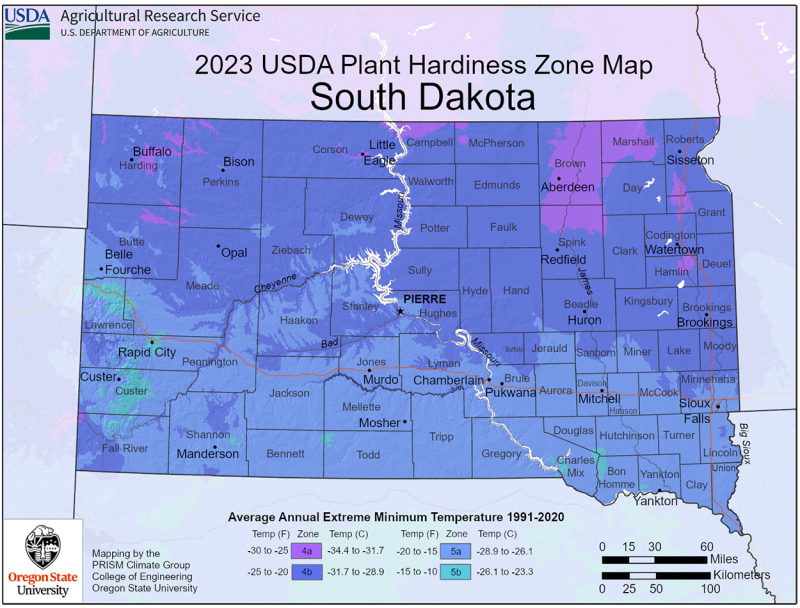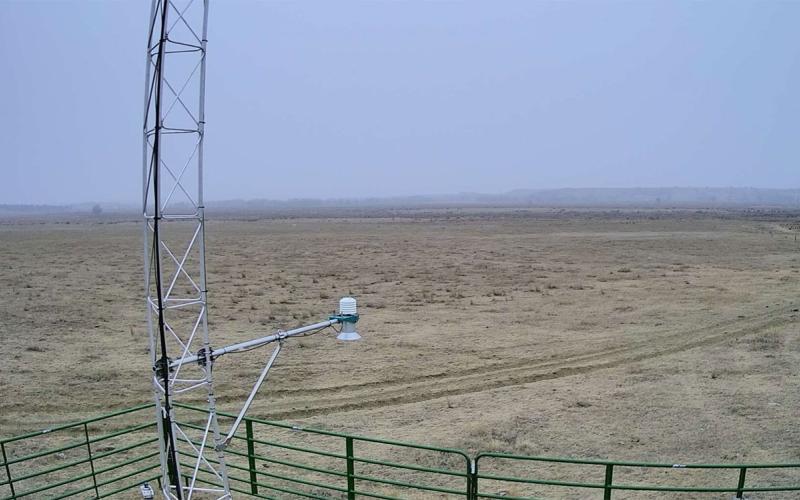Winter and spring are the seasons for planning, planting and envisioning new gardens and landscape designs. Garden centers are full of attractive flowers, shrubs, and trees. When selecting perennial varieties that will survive through winters in South Dakota, use the USDA Plant Hardiness Zones to help identify the best candidates for your landscape. Recent changes to the maps have South Dakota gardeners feeling adventurous. Learn how to proceed with cautious optimism by understanding what the USDA Plant Hardiness Zone updates mean for you!
Finding Your Plant Hardiness Zone

The USDA Plant Hardiness Zones (abbreviated as PHZ) were updated in 2023 (Figure 1) after a revision that was made in 2012. For many years, gardeners and landscapers may have used the “Sunset” hardiness zones, which were last updated in 1990. These are similar and were printed on seed packets and made popular through "Sunset" magazine and their associated gardening publications. However, the Sunset zones used much-older climate data, and thus, the USDA updated the maps to reflect more-recent wintertime temperatures.
The 2023 PHZ maps use the same calculation as the old Sunset zones. The calculation uses the average annual extreme minimum temperature for the years 1991 through 2020. This serves to identify thresholds of pests, disease, and plant damage due to cold temperatures. In South Dakota, over the last several decades, there has been a trend of warmer winter temperatures. As a result, many areas of South Dakota are now categorized in a higher number zone. Much of the state moved one zone warmer, for example from 4a to 4b or 4b to 5a. Zone 4 indicates average annual extreme minimum temperatures of -30 to -20 degrees Fahrenheit. New on the map in 2023 is a large area of southern South Dakota that is now in zone 5a, with typical winter season minimum temperatures in the -15 to -20 degrees Fahrenheit degree range. The USDA Plant Hardiness Zone Map website has a feature where you can search by ZIP code to find your local plant hardiness zone. Use the blue button below to visit their website and find your local zone.
Selecting Plants for Your Zone

Your local yard or garden may be warmer or colder than what the PHZ map shows, but it serves as a good starting point when selecting plants for your area. Your zone may have changed with the 2023 map updates, so we encourage caution in experimentation with adding new perennial plants into your garden. Remember that PHZ maps are just one tool for selecting the right plant for the right place. Soil type; microclimates; exposure to sunlight and wind; and fall, winter, and spring moisture and snow cover all play a role in the success of overwintering perennial plants. Additionally, South Dakota is known for large swings in temperature, which can be another consideration in selecting plants for our climate.
Labels on perennial plants, trees, and seed packets will often indicate the appropriate climate zone or plant hardiness zone for that variety. You should always look for this information and purchase plants that are appropriate for your zone. Local nurseries and garden centers will likely not sell varieties that won’t overwinter well in our climate, but take note if you purchase from a national chain store or bring in plants from elsewhere, especially from the south, where they have less extreme cold winter temperatures. While plant survival from year to year is never 100% guaranteed, selecting plants from the appropriate hardiness zone will give you the greatest chance for success in keeping your favorite plants in the garden for many years.


